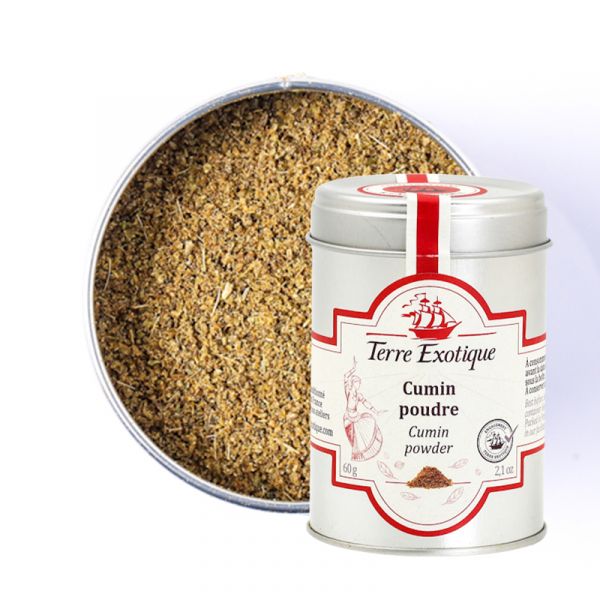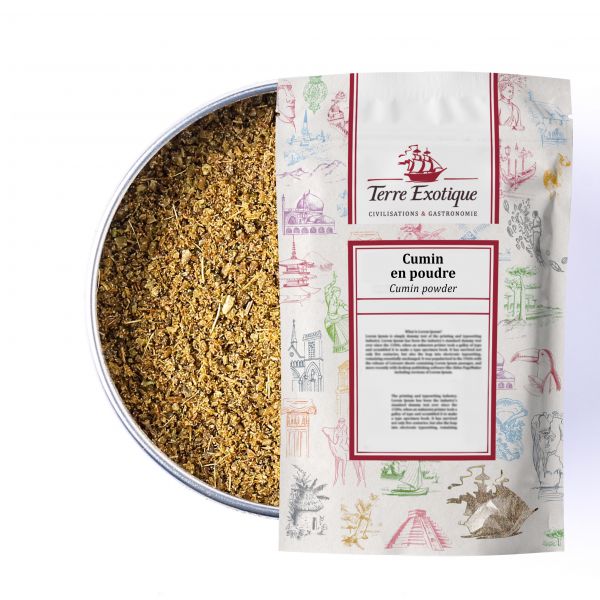





What Dishes to Use Cumin Powder In?
Explore the Bitter and Spicy Flavors of Cumin Powder
To enhance many dishes, cumin is a highly aromatic spice that will bring unique flavors to your meals. Our tip? Sprinkle a few spoons of cumin on cooked carrots to make a flavorful mash.How to Use Cumin Powder?
• cumin rice: add ½ teaspoon of cumin to your rice towards the end of cooking, then add a bit of cream and let it reduce;
• cumin hummus: add a tablespoon of cumin to your chickpeas to marinate for 3 hours;
• roasted carrots with orange and cumin: sprinkle 2 tablespoons of cumin powder on your carrots before baking them for 30 minutes;
• Lebanese falafels: click here to discover the complete recipe
• lemon chicken: add 1 teaspoon of cumin powder to your chicken before marinating it with lemon and olive oil for 1 day;
• roasted potatoes with cumin: sprinkle 1 tablespoon of cumin powder on your potatoes before baking;
• eggplant caviar: add 1 teaspoon of cumin powder to the flesh of your roasted eggplants before adding the other ingredients and mashing everything with a fork.
The Warm Aromas of Cumin
Warm, bitter, and somewhat sweet notes are characteristic of our cumin. With a strong flavor, cumin will be a dominant note in your dishes. Both earthy and spicy, its flavors unfold to reveal spicy and bitter aromas appreciated on white rice.
Cumin, a Spice from the Middle East
The botanical name of cumin is Cuminum cyminum, and it belongs to the Apiaceae family, just like parsley.Coming from the Middle East, it is mainly cultivated in the Mediterranean basin; cumin was originally a spice for smoking or it was used to prepare dishes.
Cumin is the fruit of a plant that is about 30 cm tall, from which the seeds are harvested when ripe, in September or October. After harvesting, the stems are dried in the sun for two to three days and then beaten to detach the seeds, which are the famous cumin we all know in cooking. To obtain our cumin powder, the seeds are ground after drying for simple and flavorful use in cooking.
Cumin should not be confused with caraway: small seeds that physically resemble it but do not have the same aromas. Indeed, caraway, from the Carum carvi L. umbelliferous plant, has much less powerful aromas than cumin and is more fruity.
Where Does Cumin Come From?
A Seed with Multiple Uses
Sometimes used as a smoking spice, cumin was originally used in Egypt for the mummification of the Pharaohs. It held an important place in Middle Eastern cuisine as a spice to enhance or decorate dishes. In the Bible, cumin is mentioned as an ingredient in soups and bread. So we know that its use dates back many years!Also known for its medicinal properties, cumin was used to treat digestive disorders because cumin "boosts" intestinal enzymes that help digest food more easily. Cumin also has anti-inflammatory properties and is used to relieve stomach pains, especially in South Asia where cumin seeds are infused in tea and drunk.
| Allergen | Traces possibles de:gluten,moutarde/possible traces of:gluten,mustard |
|---|---|
| Native country | FRANCE |
| Genus and botanical species | Cuminum cyminum |
| Ingredients | cumin in powder |
| Nutritional Info | / |
| TRACES EVENTUELLES D'ALLERGÈNES | céleri, sésame, moutarde, fruits à coques. |
 Français
Français 